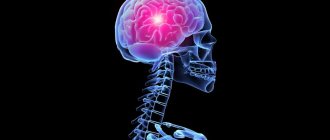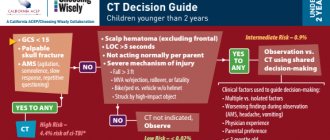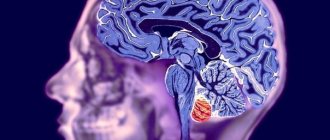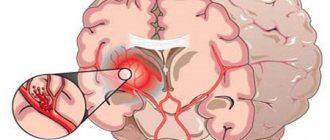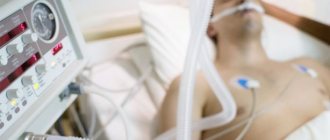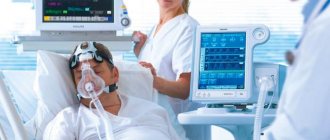21.04.2017
Belkin Andrey Avgustovich
Director of the Brain Institute Clinic LLC, Doctor of Medical Sciences, Professor of the Department of Physical and Rehabilitation Medicine of the Ural State Medical University, Chairman of the Supervisory Board of the Brain Clinical Institute ANO.
Pinchuk Elena Anatolyevna
Deputy chief physician for medical work, kmn, neurologist, doctor of physical and rehabilitation medicine
Lipovka Nadezhda Sergeevna
Head of the Department of Medical Rehabilitation, Physician of Physical and Rehabilitation Medicine, Neurologist
Traumatic coma occurs as a result of the impact of some mechanical factor on the victim’s head area. Most traumatic brain injuries occur as a result of motor vehicle accidents. When the head hits a blunt hard object, enormous kinetic energy is transferred to the brain, which, by inertia, hits the inside of the skull, and then receives a counter-impact from the opposite side. As a result of injury, hemorrhages in the brain and ruptures of axonal connections can occur. Subsequently, cerebral edema occurs with its dislocation, which leads to traumatic coma.
Clinical picture and symptoms
When a traumatic coma occurs, consciousness may be lost immediately or may fade away gradually. In some cases, the victim has a clear period during which nothing bothers him. However, most often he talks about total brain damage. With the development of cerebral edema, compression of the brain stem occurs, which causes symptoms such as:
- Severe headache.
- Indomitable vomiting that does not bring relief.
- Double vision.
- Dizziness.
- Confusion.
- Difficulties with orientation in time and space.
- Memory loss.
Subsequently, loss of consciousness occurs and the victim gradually goes into a deep coma with the loss of all reflexes.
Traumatic coma: causes
The most important reason is a gross violation of the integrity of brain structures. A brain contusion may be accompanied by a violation of the integrity of its architecture and vascular bed, which leads to increased intracranial compression and herniation of the brain stem into the foramen magnum. In this case, irritation of the vital centers of the medulla oblongata occurs and respiratory and cardiovascular activity is inhibited.
Treatment
Due to a sharp and significant increase in intracranial pressure, it is imperative to immediately administer strong loop diuretics. Reducing blood pressure and removing fluid from the body slows down the development of cerebral edema and helps gain the necessary time. In case of severe cerebral edema, surgical intervention is performed - craniotomy with subsequent decompression. The Clinical Institute of the Brain has at its base a high-tech neurosurgical department that can cope with even the most severe cases of traumatic coma.
Coma
Coma is a lack of consciousness resulting from injury, infection, or serious illness. Coma is not an independent disease; it is a severe complication of the central nervous system. Cases in which coma :
- swelling of the brain (usually due to traumatic brain injury)
- brain tumor
- stroke
- aneurysm rupture
- liver or kidney failure
- complication of diabetes
- low blood pressure
- major blood loss
- infection or poisoning
- burn
- severe complications of cardiac diseases
- alcohol intoxication
If a catastrophe occurs with a person’s condition, his level of consciousness changes. There are several degrees of depression of consciousness. At the everyday level, this change in consciousness can be compared to sleep. But not the sleep of healthy people, but sleep due to the condition of the brain as a result of injury, infection or serious illness.
Stupefaction: the affected person is just trying to sleep and he is at least a little accessible to speech contact, does not answer immediately, in monosyllables and tries to close his eyes.
Stupor : a person who is sick and lying with his eyes closed can still be awakened by touch.
In these conditions, patients can be transported to the nearest hospital by local medical transport.
Coma : the person cannot be woken up due to the severity of the condition.
There are degrees of coma depth:
Coma 1st degree (moderate or superficial coma). The patient retains independent natural movements of the limbs, defensive reactions are active and there is still facial expression.
Coma 2nd degree (deep coma). The injured person may have independent limb movements, but they are not natural, there are no protective movements, and spontaneous breathing is not regular.
In these stages of coma, patients can be transported to local hospitals or specialized medical centers only by resuscitation teams in intensive care vehicles.
Coma 3rd degree (atonic coma) The patient has no movements, even pathological ones, spontaneous breathing fades away, hemodynamics are not stable, the pupils become wide. Without medical care in intensive care, this stage of coma extremely quickly ends in the death of the patient.
If your loved one falls into a Coma, then this is a critical condition, with the need to provide first aid for a coma (you need to turn the person on his stomach or side, remove mucus and stomach contents from the mouth) and immediately call a doctor.
Hospital, coma, intensive care unit - these are frightening words for any person, especially if an accident happened to someone you love. But at this moment, not only a person’s health, but also a person’s life depends on your actions. Therefore, do not hesitate and do not allow panic to take over you. Call an Ambulance for hospitalization at the nearest hospital, and then contact a resuscitation consultant at “Special Medical Care” for transfer to a specialized medical center. Treatment and rehabilitation of a patient after a coma should be carried out under the supervision of a qualified specialist.
Remember that the lack of timely diagnosis and specialized treatment can lead to future disability or death!
It is hospitalization in specialized medical centers that makes it possible to correctly diagnose, stabilize and improve the condition of a patient in a coma, and avoid or overcome complications of a coma. All this reduces the mortality and disability of the patient in a coma.
The main condition for a favorable prognosis in a comatose state is the patient’s ability to be in these specialized medical centers without deterioration and on time. This is precisely where interaction between the patient’s relatives and our company’s doctors is necessary. We can help at any stage: advice by phone (listed at the beginning of the site), consultation in the department where the patient is in a coma, as well as organize transportation and hospitalization to specialized medical centers in Moscow.
Call us and we can help your sick relatives!
First aid
If you find a victim in a traffic accident, immediately call an ambulance and rescue team. If possible, move the victim out of the danger zone, but do not forget about your own safety.
Clinical Brain Institute Rating: 4/5 — 5 votes
Share article on social networks
Characteristic symptoms
Coma after traumatic brain injury is primarily characterized by impaired consciousness. All symptoms of this condition can be divided according to the degree of its severity:
- Superficial disturbance of consciousness. The person falls into deep sleep. When trying to talk to the victim, he may open his eyes and sometimes start a conversation. Speech with punctuation. The patient can make slight movements of the limbs.
- Ordinary coma. The patient is able to make sounds, unintentionally open his eyes and make sudden movements with his hands. The doctor can fix the victim’s limbs with special devices to prevent physical harm.
- Deep coma. Reflexes, mobility and respiratory function are completely absent. There is no reaction to pain, just like there is to the light of the pupils.
Programs:
Assessment of rehabilitation potential
Early (resuscitation) rehabilitation
Drug-free brain stimulation
Kinesitherapy with biofeedback
Restoration of the peripheral nervous system
Rehabilitation after a coma
Rehabilitation period
Not all cases of impaired consciousness require a long rehabilitation period. According to statistics, recovery from a coma caused by diabetes, high doses of drugs or alcohol does not last long. In such cases, impaired consciousness is present before the toxic substance is eliminated from the body.
Coming out of a 3rd degree coma after a TBI or 1st degree equally requires rehabilitation measures. First of all, measures are taken to restore brain function. Not in every case, amnesia develops, but there is a deterioration in memory and attention.
How do you recover from a coma after a TBI? During this period, the ability to sit and walk without assistance and available means is lost. Confusion of consciousness is observed, the person loses orientation in space. The following specialists help correct such disorders caused by prolonged impairment of consciousness:
- neurologist (helps restore speech);
- psychologist (normalizes the psycho-emotional state);
- occupational therapist (helps improve motor skills);
- neurologist, physiotherapist, etc.
When recovering from a coma after a TBI, there is no need to immediately subject the patient to physical and mental stress on the first day. Rehabilitation should take place gradually. How many months or years it will take to fully restore the activity of the central nervous system, and what the prognosis will be, depends on the severity of the traumatic brain injury.
Rehabilitation after a coma consists of assisting the patient in all everyday activities: eating, going to the toilet and showering. Developmental games are required to help restore motor skills, memory, and speech. It is important to normalize your diet so that it includes all useful vitamins and microelements.
To restore muscle tone, massage procedures are prescribed, which are carried out in a specialist’s office and subsequently at home. During the massage, you can use any essential oil. The procedure also helps improve blood circulation. The main condition is continuity of therapy, even if the first positive changes are visible.
Treatment is exclusively in a hospital setting!
Treatment of TBI of any severity is carried out only in a hospital setting, because loss of consciousness immediately after receiving a TBI, although it reaches a certain depth, does not in any way indicate the real condition of the patient. The patient can prove that he feels fine and can be treated at home, however, given the risk of complications, he is provided with strict bed rest (from one week to a month). It should be noted that even a concussion of the brain, having a favorable prognosis, in the case of large-scale damage to parts of the brain can leave neurological symptoms for life and limit the choice of profession and the patient’s further ability to work.
Treatment of TBI is mainly conservative, unless other measures are provided (surgery if there are signs of brain compression and hematoma formation), and symptomatic:
- The gag reflex and psychomotor agitation are suppressed with haloperidol;
- Brain edema is relieved with the help of dehydrating medications (mannitol, furosemide, magnesium, concentrated glucose solution, etc.);
- Long-term use of dehydration medications requires the addition of potassium preparations (panangin, potassium chloride, potassium orotate) to the prescription list;
- For severe pain effects, analgesics, as well as sedatives and tranquilizers are indicated (the patient should rest more);
- Antihistamines, medications that strengthen the walls of blood vessels (calcium preparations, ascorrutine, vitamin C), improve the rheological properties of blood, ensuring water-electrolyte balance and acid-base balance have a good effect;
- If necessary, the patient is given medications that help normalize the activity of the cardiovascular system;
- Vitamin therapy is prescribed when the acute period is behind us - it is more indicated at the stage of recovery after injury.
Treatment
It is important to carry out treatment immediately after damage. If all manipulations are performed correctly, the chances of survival and recovery increase. After the ambulance arrives, the patient is hospitalized
After determining the nature and severity of the damage, therapy is prescribed
After the ambulance arrives, the patient is hospitalized. After determining the nature and severity of the damage, therapy is prescribed.
If a person has received a minor injury, he is prescribed medications to relieve pain and is recommended to get proper rest.
In severe situations, they begin with restoring respiratory function (if it is impaired). The patient may be placed on a ventilator. If the wound is small, then apply a bandage; in serious cases, stitches may be applied.
Subsequently, they resort to drug treatment, with the help of which they restore and maintain basic indicators, return or stabilize the patient’s consciousness. When it is possible to overcome the acute phase, they move on to further rehabilitation.
The duration of the recovery period and its success depend on the severity of the injury and the correctness of the selected treatment.
Editorial: Symptoms and features of depression in women
Prevention of complications, rehabilitation
Only timely treatment can reduce the risk of negative consequences after a head injury. First aid is usually provided by medical personnel. But people who were close to the victim at the time of his injury can also help. You need to do the following:
- Turn the person over to a position in which the likelihood of hypoxia and asphyxia is minimal. If the victim is conscious, you should turn him on his back. Otherwise, you need to lay it on its side.
- Treat the wound with water or hydrogen peroxide, apply bandages and a bandage to it: this will reduce swelling and the risk of developing infectious complications with an open head injury.
- If signs of asphyxia, difficulty breathing, or heart rhythm disturbances appear, perform cardiopulmonary massage and provide the patient with access to air.
- Stop accompanying bleeding, treat other damaged areas of the body (if any).
- Wait for the ambulance to arrive.
From the editor: Ways to get out of depression after the death of a loved one
Treatment of head injuries is carried out exclusively in a hospital, under the strict supervision of a doctor. Depending on the type and severity of the pathology, drug therapy or surgical intervention is used. The following groups of drugs may be prescribed:
- analgesics: Baralgin, Analgin;
- corticosteroids: Dexamethasone, Metipred;
- sedatives: Valocordin, Valerian;
- nootropics: Glycine, Phenotropil;
- anticonvulsants: Seduxen, Diphenin.
Typically, a patient's condition after an injury improves over time. But the success and duration of recovery depends on the measures taken during the rehabilitation period. Lessons from the following specialists can return the victim to normal life:
- occupational therapist. Works on renewing self-care skills: moving around the apartment, driving a car as a passenger and driver;
- neurologist. Deals with issues of correction of neurological disorders (decides how to restore the sense of smell, reduce seizures and what to do if you constantly have a headache after suffering an injury);
- speech therapist. Helps improve diction, cope with the problem of slurred speech, restores communication skills;
- physiotherapist. Carries out pain correction: prescribes procedures to reduce headaches after head injury;
- kinesitherapist. Its main task is to restore the functions of the musculoskeletal system;
- psychologist, psychiatrist. Help eliminate mental disorders due to brain injuries.

